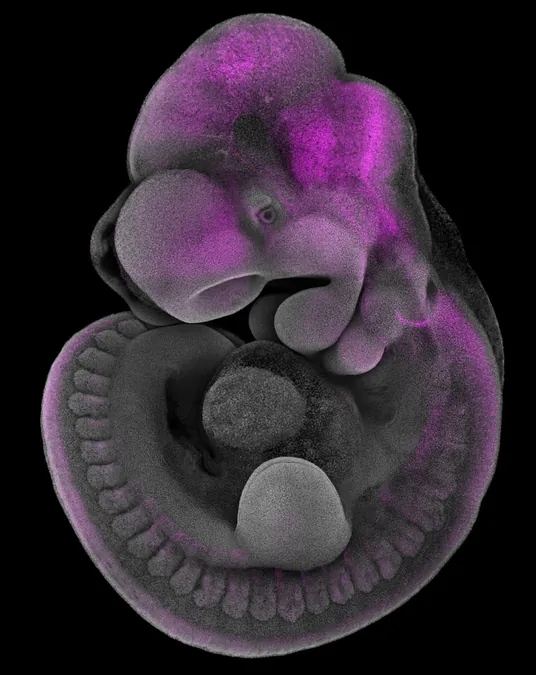
Revolutionary Study Unveils Secrets of Brain and Skull Evolution!
2025-06-03
Author: Sarah
Unlocking Evolution's Secrets: The MN1 Gene
A groundbreaking study from the Max Planck Institute for Evolutionary Biology has revealed a fascinating connection between the MN1 gene and the simultaneous evolution of the brain and skull—a discovery with major implications for our understanding of human development and the origins of birth defects. This pivotal research was published in the renowned Proceedings of the National Academy of Sciences.
The Dynamic Duo: Brain and Skull
For eons, the brain and skull have developed in tandem, creating a remarkable biological partnership critical for survival. This intricate relationship isn't just a chance occurrence. Throughout millions of years of evolution, both the brain and skull adapted together, influencing one another's form and function. While scientists have long noted this symbiotic growth, the genetic mechanisms behind it have remained largely elusive—until now.
MN1: A Gene's Journey Through Time
The researchers, led by the independent group Evolutionary Developmental Dynamics headed by Dr. Markéta Kaucká, traced the lineage of the MN1 gene back to ancient invertebrate life forms. Though it evolved distinctively in these simpler organisms, a core sequence of the MN1 gene endured through vertebrate evolution. As vertebrates emerged, this gene underwent critical structural changes, becoming essential for their developmental processes, particularly in shaping both brain and skull.
Gene's Role in Development
Delving deeper into MN1's function, the team found that it plays a crucial role in patterning the embryonic brain early in development, which in turn dictates how cranial bones form. A deficiency in MN1 leads to significant developmental issues—brain segmentation fails, cranial nerves do not form correctly, and skull bones develop improperly. These abnormalities mirror those seen in human conditions like cleft palate and neurodevelopmental disorders.
Connecting the Dots: Retinoic Acid and Human Health
The findings of the study have profound implications, especially regarding retinoic acid—a vital molecule for embryonic development. MN1 regulates retinoic acid levels, alongside the expression of Hox genes that serve as a blueprint for the body's structural layout from head to tail. This link between MN1 and established molecular pathways unveils how essential genes evolved to integrate into ancient biological systems, facilitating major evolutionary shifts.
A New Understanding of Cancer Treatment
The research further enhances our understanding of why some leukemia patients exhibit resistance to retinoic acid therapies. High levels of MN1 in these patients likely accelerate the breakdown of the drug, diminishing its effectiveness. Moreover, this study illuminates connections between various human disorders stemming from MN1 mutations, which have been implicated in neurodevelopmental and craniofacial anomalies.
The Bigger Picture: Evolution, Development, and Health
This exciting discovery not only reshapes our comprehension of brain and skull evolution through a single gene, but it also opens doors to better understanding human health. As we connect these genetic dots, we pave the way for innovative therapies and greater insights into the complexities of human biology.




 Brasil (PT)
Brasil (PT)
 Canada (EN)
Canada (EN)
 Chile (ES)
Chile (ES)
 Česko (CS)
Česko (CS)
 대한민국 (KO)
대한민국 (KO)
 España (ES)
España (ES)
 France (FR)
France (FR)
 Hong Kong (EN)
Hong Kong (EN)
 Italia (IT)
Italia (IT)
 日本 (JA)
日本 (JA)
 Magyarország (HU)
Magyarország (HU)
 Norge (NO)
Norge (NO)
 Polska (PL)
Polska (PL)
 Schweiz (DE)
Schweiz (DE)
 Singapore (EN)
Singapore (EN)
 Sverige (SV)
Sverige (SV)
 Suomi (FI)
Suomi (FI)
 Türkiye (TR)
Türkiye (TR)
 الإمارات العربية المتحدة (AR)
الإمارات العربية المتحدة (AR)